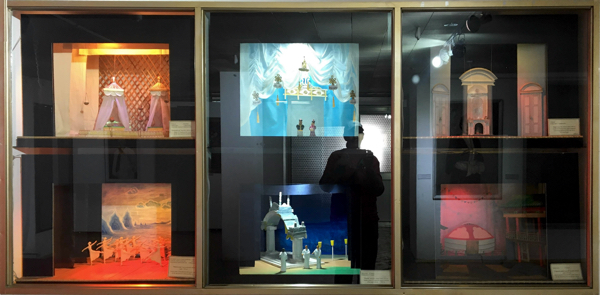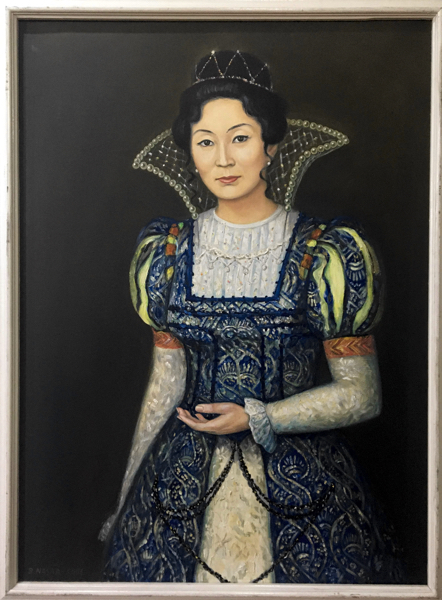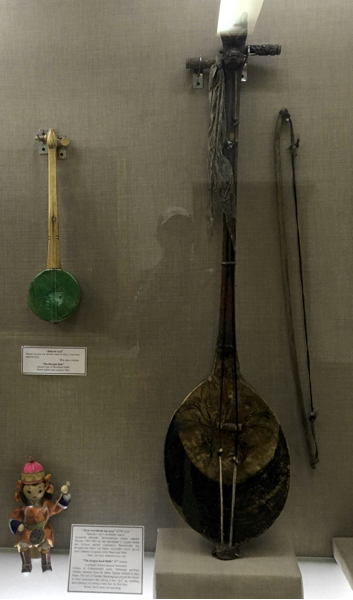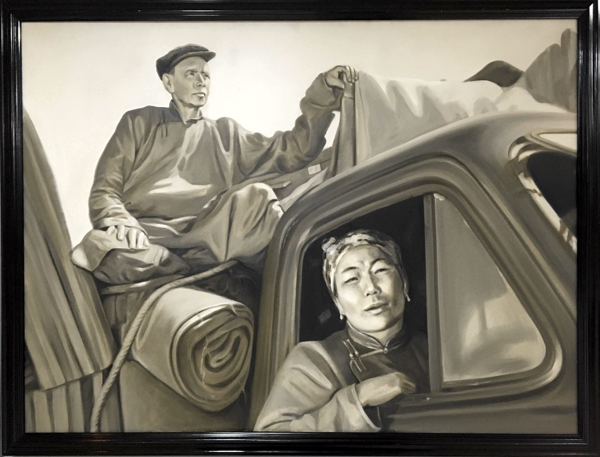
Monday, October 14, 2019
After lunch and a brief rest in my hotel room, I ventured forth for an afternoon adventure. This time, I turned left out the side door of the hotel, past the National Modern Art Gallery, and then another left onto Amar Street, heading toward Sukhbaatar Square.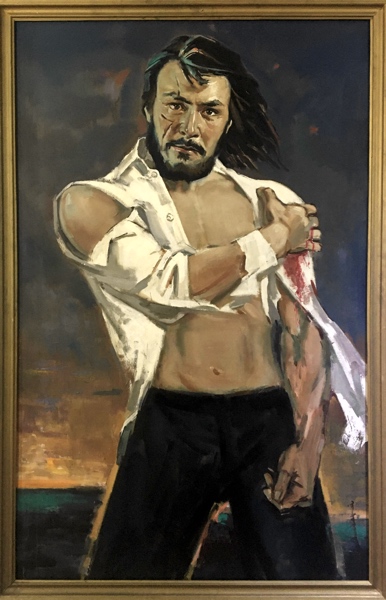 This street is rather narrow and doesn’t get much sunlight, so I had to walk carefully to avoid slipping on patches of ice. Again, I didn’t make it very far when I ran right into the Mongolia Theatre Museum. This was another museum high on my list!
This street is rather narrow and doesn’t get much sunlight, so I had to walk carefully to avoid slipping on patches of ice. Again, I didn’t make it very far when I ran right into the Mongolia Theatre Museum. This was another museum high on my list!
I entered the rather nondescript entrance, paid the ₮2,000 admission (US$0.75), and entered the museum. The museum is L-shaped, with one wing straight off the entrance, and another wing leading off to the right. The two wings are divided into six “halls”: the paintings hall, the performing arts hall, the Mongolian traditional musical instruments hall, the theatrical tradition hall, the Mongolian cinematography hall, and the modern arts hall.
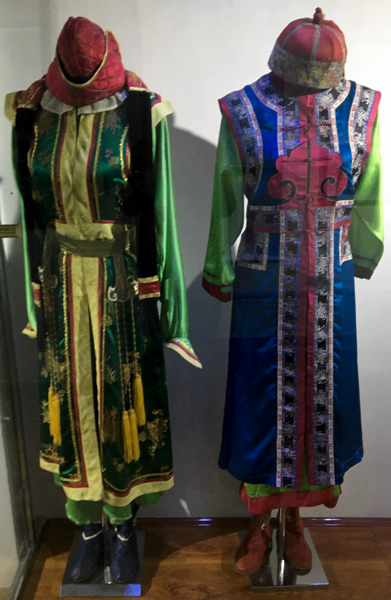 Throughout the museum, glass display cases showcased numerous costumes of all varieties, from military and dignitary, to ballet dancer to modern dress to traditional Mongolian storyteller. One wall held display cases filled with Mongolian instruments, including a harp reported to be 1400 years old. Other display cases contained dioramas of theater scenes, complete with tiny ballet dancers.
Throughout the museum, glass display cases showcased numerous costumes of all varieties, from military and dignitary, to ballet dancer to modern dress to traditional Mongolian storyteller. One wall held display cases filled with Mongolian instruments, including a harp reported to be 1400 years old. Other display cases contained dioramas of theater scenes, complete with tiny ballet dancers.
Further down the hall, photos and montages depicted scenes from movies and movie sets. Included were old photography cameras, movie cameras, props, and other artifacts, as well as paintings and photographs of leading actors. It was interesting to read the placard descriptions of the cameras, such as “Russian copy of a German or American camera.” Mongolia is a democracy today; it’s hard to think of it as part of the former Soviet bloc. How did that affect Mongolians’ access to cinematography equipment? How did “Russian copy” cameras stack up to the “originals?”
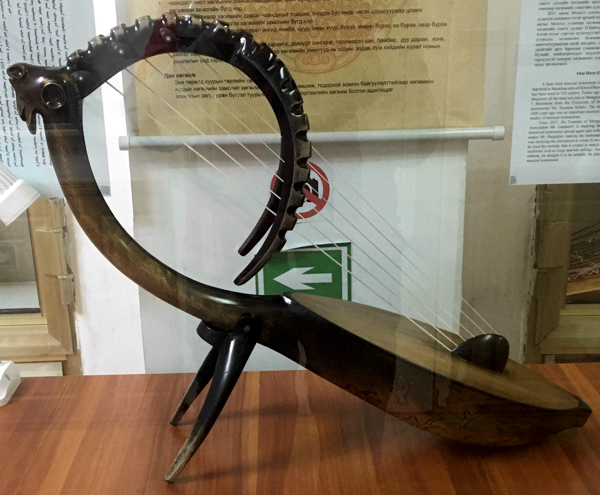 I moved on to the next wing, which contained more costumes encased in protected glass, as well as paintings and photos of leading actors. Further down, the museum had a large collection of puppets and marionettes. Puppets and marionettes are right up there with clowns for me, so I left this part of the exhibit fairly quickly. I found it just creepy; I didn’t like all those vacant little doll eyes staring at me. Ugh!
I moved on to the next wing, which contained more costumes encased in protected glass, as well as paintings and photos of leading actors. Further down, the museum had a large collection of puppets and marionettes. Puppets and marionettes are right up there with clowns for me, so I left this part of the exhibit fairly quickly. I found it just creepy; I didn’t like all those vacant little doll eyes staring at me. Ugh!
On my way out, an attendant approached me with a little information pamphlet. She seemed a little apologetic for the size of the museum. I assured her I found the museum to be pretty impressive, and I did. I left with an increased respect for the Mongolian film industry and a desire to seek out Mongolian films when I got home.
The Mongolian Theatre Museum is well worth the visit. It took about an hour and cost only 75 cents. And, the description placards are in both English and Mongolian for those of us who are language challenged.

Display of theater setting dioramas 
B. Nasantsengel “Artist Tseenyambuu.D”, oil on canvas 2001 
Traditional Mongolian instruments 
Oil on canvas, 2007
